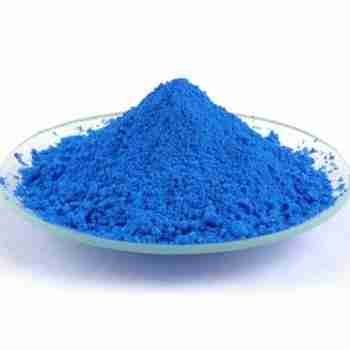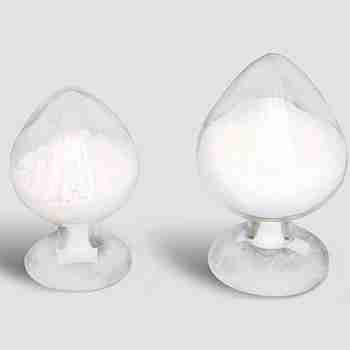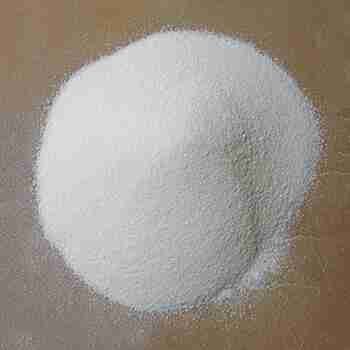C-Phycocyanin Cas 11016-15-2
Chemical Name: C-Phycocyanin
CAS No.: 11016-15-2
Molecular weight:?426.67
Appearance: BLUE POWDER
Assay??80%
发送询盘
Description
C-PHYCOCYANIN Quick Details
Chemical Name: C-Phycocyanin
CAS No.: 11016-15-2
Molecular Fomula:/
Chemical Structure:/
Molecular weight:?426.67
Appearance: BLUE POWDER
Assay??80%
PHYCOCYANINTypical Properties
Appearance
Blue?powder
Odor/Taste
Characteristic
Solubility
Water soluble
Impurity
None visible?impurity
Color value
??250unit
Loss?on?drying
??7.0%
Protein?(g/100g)
15-70%
Phycocyanin?(g/100g)
10-60%
Lead?(Pb)
??0.9?(mg/kg)
Arsenic?(As)
??0.5?(mg/kg)
Mercury?(Hg)
??0.05?(mg/kg)
Total?plate count
??1000?(CFU/g)
Mold*
??300?(CFU/g)
Coliforms
??10?(CFU/g)
C-PHYCOCYANIN??application:
The application research of phycocyanin is very common and can be summarized in the following aspects: (1) Natural food pigments: Phycocyanin is a water-soluble pigment, pure blue, clear and lovely, and can be used as a food colorant and additive in cosmetics. And it is very rich in protein itself. (2) Medical and health food: In vitro experiments of phycocyanin have proven that it can stimulate the formation of red blood cell colonies, similar to the effect of erythropoietin (EPO). Phycocyanin can help regulate the synthesis of a variety of important enzymes needed by the human body, and plays an important role in inhibiting the growth of cancer cells. It can also regulate the body??s immune system, enhance the function of the immune system, and improve the body??s resistance to disease. (3) Cosmetics field: Phycocyanin is a collagen-like protein with antioxidant, moisturizing, anti-allergic, and freckle removal effects. (4) Special reagents for biology, chemistry and cytology experiments: Phycocyanin is blue and fluorescent, and can be used as a reagent for some photodynamic research in biology and cytology. It can also be used as a biochemical marker.
C-PHYCOCYANIN?Packaging and Shipping?
customized according to customer needs.
C-PHYCOCYANIN?Storage
It should be stored in a clean, dry and cool place, preventing from sunlight, rain.
| 5 |
|
0 |
| 4 |
|
0 |
| 3 |
|
0 |
| 2 |
|
0 |
| 1 |
|
0 |
- 2
- 2-diallylpent-4-en-1-amine
- 4
- 95-16-9
- Ammonium sulfamate
- Benzothiazole
- cas:67889-00-3ح2
- cas:83524-75-8 | pigment black 32
- cas:928836-00-4 | 2
- cas:932745-70-5 | 4
- Chemical Minerals
- Coconut diethanolamide
- Daily Chemicals
- discount
- for sale
- General pvc resin
- hexyl D-glucoside
- in stock
- Lauramidopropyl betaine
- LAURIC ACID MONOETHANOLAMIDE
- Petroleum Additives
- Plasticiser
- Ploymers
- price
- PVC
- quotation
- Raw Materal
- Remove term: Petroleum Additives Petroleum Additive
- SODIUM ETHYL 2-SULFOLAURATE
Related Products
Chemical Name: o-Xylene
Synonyms: 1,2-Dimethylbenzene; ortho-xylene
CAS No.: 95-47-6
Molecular Formula: C8H10
Molecular Weight: 106.17
Chemical Name: 3-Hydroxybutyric acid
CAS No.: 625-71-8
Molecular Formula: C4H8O3
Molecular Weight: 104.1
Appearance: White powder
Product name:Cyclopentane
Purity:96%
Appearance:White powder
Package:25kg/bag
Sample:Available
Ectoine is a naturally occurring osmoprotectant, a cyclic amino acid derivative that offers exceptional cell-stabilizing properties. Highly valued in cosmetics and pharmaceuticals, it enhances product efficacy by maintaining cell integrity under various environmental stresses.
Chemical Name: N-Acetyl-D-mannosamine
Cas: 7772-94-3
MF: C8H15NO6
MW: 221.21
Appearance: White to off-white powder
Chemical Name: beta-NADH disodium salt
Other name: beta-Nicotinamide adenine dinucleotide disodium salt
CAS No.: 606-68-8
Molecular Fomula: C21H30N7NaO14P2
Molecular weight:?689.44
Appearance:?white to light yellow powder
Assay: 95%min
Polyglutamic acid (y-PGA), also known as natto gum, is a high molecular peptide polymer synthesized from several glutamic acid monomers through microbial fermentation. It is rich in glutamic acid, glucose, protein and minerals. , vitamins and other biologically active substances.
Polyglutamic acid (??-PGA) is a sticky substance that was first discovered in ??Natto??. It is currently widely used in agricultural production and is called a new biostimulant. It is fully water-soluble, biodegradable, edible, and non-toxic. It is a biopolymer produced by microbial fermentation.
Chemical Name: Dehydrocholic acid
Synonyms: Acide dehydrocholique; Triketocholanic acid
CAS No.: 81-23-2
Molecular Formula: C24H34O5
Molecular Weight: 402.53
Appearance: Powder
Chemical Name: STODDARD SOLVENT
CAS No.: 64742-88-7
Appearance: Colorless or Light Yellow Liquid
Chemical Name: UV-120
Other Name: (2’,4’-Di-tert-butylphenyl 3,5-di-tert-butyl-4-hydroxybenzoate)
CAS No.: 4221-80-1
Molecular Fomula: C29H42O3
Molecular weight: 438.66
Assay: ≥99%(LC)
Hydrolyzed keratin is originated from wool and is a light yellow to brownish-yellow clear fluid with a particular smell. It needs to undertake unique organic treatment to come to be brief peptides prior to it can be naturally used. Treated keratin is an acknowledged prospective resource of high-quality healthy protein with high nutritional value and secure quality.
It is a keratin hydrolysate derived from acid, enzyme and other hydrolysis methods, and has been used in feed and food industry, pharmacy, fertilizer, pesticide, environmental protection, leather industry, cosmetics and many other fields. Specifically, the material can be blended with polyamide 6 to prepare nanofibers for adsorbing chromium (VI). In addition, the compound can be used as an effective ingredient in the manufacture of shampoo, shower gel and shower gel. In addition, the chemical can be used as an effective ingredient in the production of deodorization compositions. In addition, the substance has been proven to be useful as a hair styling agent.
Coenzyme A sodium salt hydrate (CAS 55672-92-9) is an important biologically active substance.
Appearance: Usually white or off-white powder. Solubility: Easily soluble in water, forming a clear solution in water.
Function: In the body, coenzyme A sodium salt hydrate is an important coenzyme that participates in a variety of biochemical reactions. It plays a key role in the metabolism of fatty acids, promoting the activation and oxidative decomposition of fatty acids. It participates in the tricarboxylic acid cycle and provides energy for cells. It is also important for the metabolism of certain amino acids.
Application: Commonly used in biochemistry and molecular biology research as a cofactor for enzyme reactions.
In the field of medicine, it may be used in the treatment or adjuvant treatment of certain diseases.



















Reviews
There are no reviews yet.